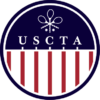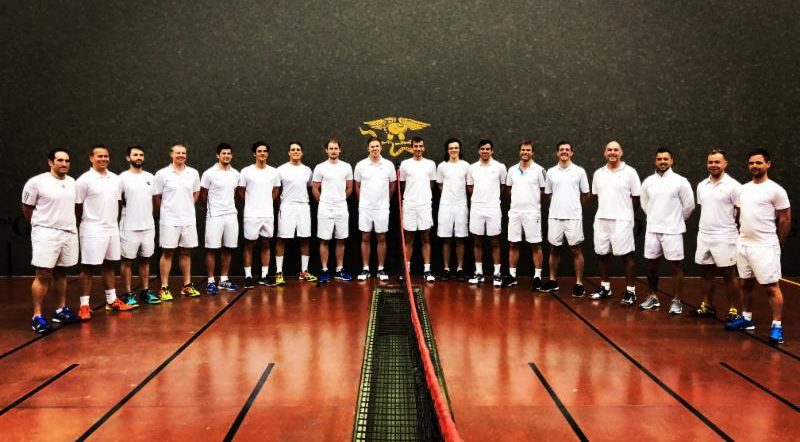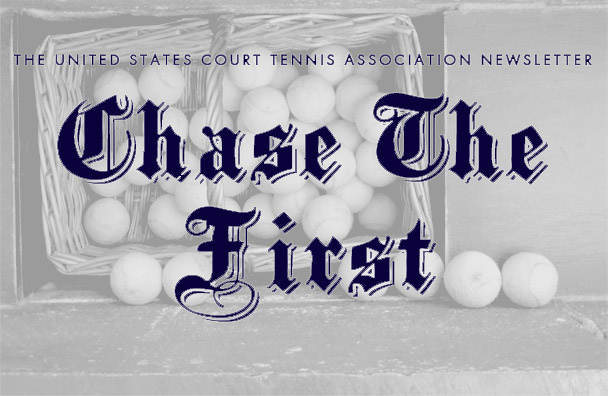Mother’s Day. It was a tough call, but the only day that worked in the busy USCTA spring calendar for the re-scheduled Anne Boleyn Memorial Handicap was the Hallmark Company’s favorite Sunday. This is not to mention that a day celebrating maternity most likely would not have been the pick of the late Ms. Boleyn either, but hey, she did manage to give England one of it’s greatest monarchs in the person of her daughter, Elizabeth. Perhaps that was to be regarded as some sort of a prophetic.
So when Jane Lippincott, the pre-eminent resident American lady player of our day, made the suggestion to hold the peripatetic event in Tuxedo on this of all week-ends, little did she realize that the day would end with a special Mother’s Day gift for her indeed. For when the final ball was struck, her 13 year old daughter, Caroline Lippincott, had defeated all comers and had captured the coveted plated hatchet and her first Anne Boleyn title.
The Anne Boleyn had been rescheduled from the fall when questions of handicap and format had hampered the level of committed participation. USCTA President Jim Wharton contacted tournament creator Edward Hughes and asked him to help get the event back on track. With the help and support of Charles Neuhauser and the members and staff of The Tuxedo Club, the second week-end in May was selected as the best for all concerned.
The tournament featured the Lippincott’s from Newport ; a strong contingent from Washington including Pat Homer, Beth Curren, Anne Partlett, Genie Gordon and Cecelia Forbes; Pam Post from Philadelphia and an outstanding show of support from the host Club Tuxedo with Chauncy Rodzianko, Valerie Evans-Freake, Evelyn David, Francine Royan and Barbara Pryor.
The tournament was re-configured to give everyone a good first round match based upon handicap, with the higher handicaps allocated to one side of the draw and the lower numbers to the other. The early rounds featured a number of three set matches with Jane Lippincott losing out to Beth Curren in three and Evelyn David falling to Forbes in three. Anne Partlett breezed through the first two rounds losing only a handful of games. Her court tennis was perhaps a high handicap, but her ability to maneuver around a court was an enormous asset. In the lower half, Genie Gordon and Chauncy Rodzianko and Caroline Lippincott all advanced in straight sets, with Gordon turning her ankle in her quarter final three set victory over the acting host Rodzianko.
The semi’s featured Caroline against Genie Gordon, where the younger Lippincott manged to exploit a turned ankle that Genie had suffered in the previous round. Former winner, Cecelia Forbes, on the other side of the draw had to play newcomer Anne Partlett, whose 62 handicap belied her 26 year old, former college soccer player’s athleticism. But Forbes used her skill as a Boleyn handicap veteran to prevail.
Caroline defeated Cecelia in a thrilling three set final that featured a steep handicap for the DC veteran, and a chance for the young school girl to play on a national stage. The first was gone in heartbeat as the younger blonde smacked forehands and two handed backhands enough times over the net to force Forbes into errors. At ‘receive 30’ that needn’t happen often before a set has disappeared.
In the second set Forbes grooved a railroad that the younger player had not seen and captured ace after ace. Then mixing the railroad with a spinning sidewall that jumped into the Newporter, confusing her even more, Caroline let the set slip away. The last started at three-all. At 4-3 Lippincott, Forbes hit a shot down the main wall that hit the tambour. Caroline stepped in and with a lawn tennis two hander slipped the ball back over the net to Forbes’ backhand which she netted. A few more misses and the title went to the young lady from Jamestown .
Caroline captured more than the title. Her casual style and her unaffected charm captivated all who had the chance to see her play or play against her. She was competitive without aggression, and relaxed without indifference. She wanted to win, but played as if it was just a great opportunity to compete. Jane said that for month’s Caroline had been asking if she could please play in the Anne Boleyn. We were all lucky to have her be part of the event. A product of not only her proud parents, but also of the National Tennis Club’s Junior Development Program, they should share the credit in whatever role they have played in producing a young player with a sense of joy in the game that is the source of sportsmanship and can serve as an inspiration for all who play.
Edward Hughes announced before the semi-finals that if she were to win, for her effort, Caroline would re-initiate the tradition of giving a permanent hatchet as a trophy to the winner. This will please her mother. For it was Jane who captured the Anne Boleyn Championship on the same Tuxedo court in 1999, the only mother-daughter pair to ever win the same title. Jane’s win was during a period when the awarding of the silver slicer had been suspended, so when she enters her house and sees the coveted, coated axe, she can be proud not only of her beautiful child, but reminded of her own accomplishment as well.
Thanks goes to The Tuxedo Club, USCTA rep and Court Tennis chair Charles Neuhauser, Tommy Greevey, Ken Jacobs, Jackie Fowler, and all the members and staff at the Club who made the event so successful. And Thanks as well to Chauncie Rodzianko who on Saturday night before dinner at the Clubhouse, hosted a very nice cocktail party over-looking a quiet glen outside her porch in the Park.
We will revisiting the event for next year’s schedule and hope to have more young players come and compete, and more of our experienced players take part in the event that awards what James Zug, chronicler of many sports, calls the greatest prize in all of women’s sport – The Anne Boleyn Memorial Handicap Trophy


